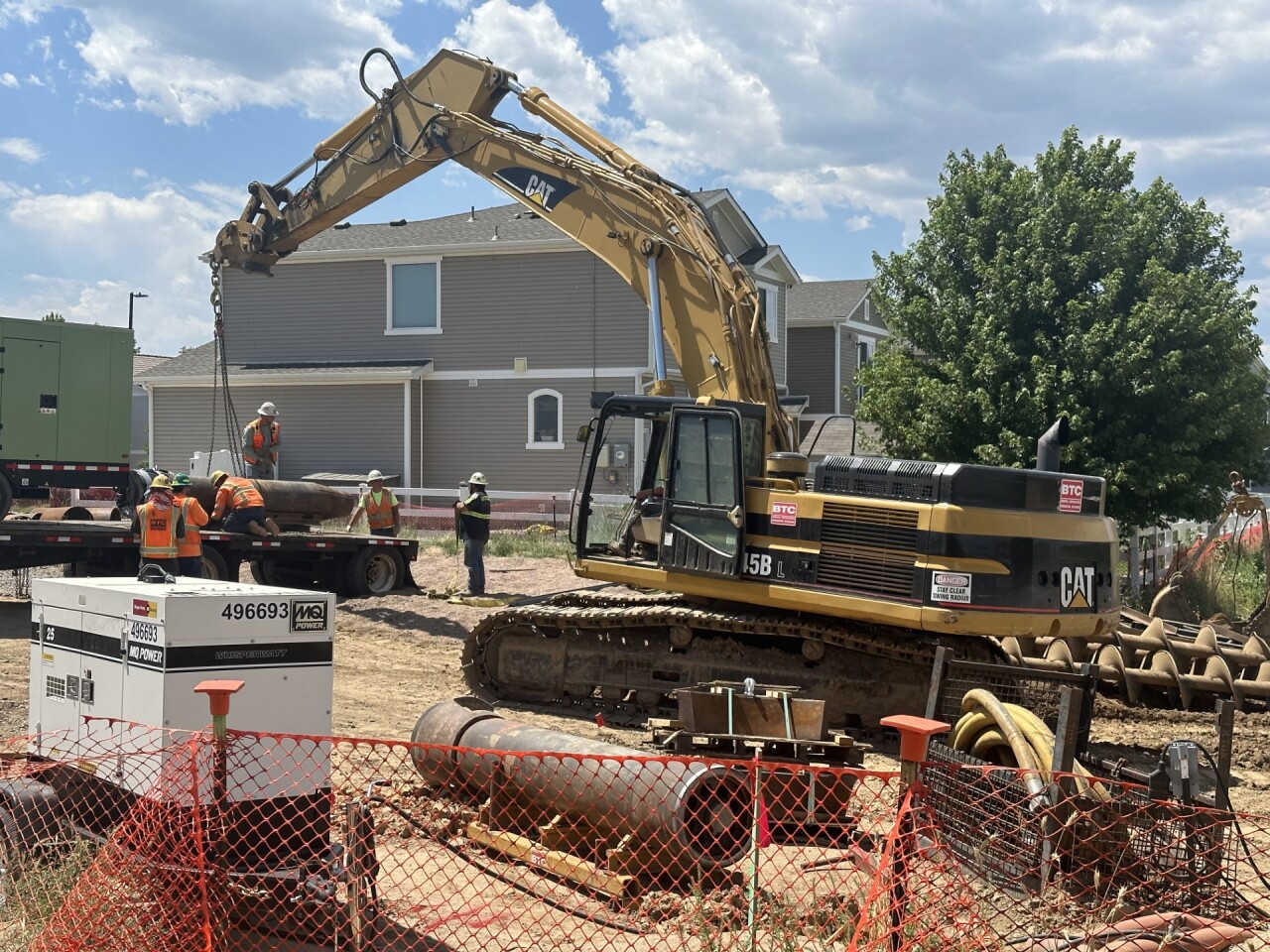DENVER — Construction is, of course, a common site on the Front Range, with bulldozers, backhoes and trucks clearing the way for new infrastructure and homes. But the location of one infrastructure project near Denver International Airport has neighbors scratching their heads in disbelief.
“I was shocked when that 30 feet easement ended up being from way over there to way over there, 120 feet wide in some places,” said Kelvin Klink.
Klink is talking about wide swaths of trees in a natural wetlands area near North Dunkirk Street and East 53rd Avenue in Denver’s Green Valley Ranch neighborhood that were bulldozed for a new Aurora sewer line.

“Let’s not cut down the few trees that we have,” said Katrina Johnson as she was walking to work.
“It’s extremely unsightly,” Klink said. “The pipeline comes right next to a pond where the pelicans hang out.”
Klink lives nearby and estimates crews removed hundreds of decades-old cottonwoods and other trees.
“If they had sharpened their pencils some, they could have avoided the unnecessary cutting of a lot of trees,” Klink said. “Since it’s benefiting the city of Aurora, and I’m not challenging their need to do it, it would have been nice to have more communication with the community."
For its part, the City of Aurora says it did host a number of community meetings that were poorly attended prior to launching the project.
“We definitely try to minimize impact to not only the customers in the area, but also the environment,” said Andrea Long, project manager for the First Creek Interceptor Project, a regional masterplan with Metro Wastewater. “So from day one on the project, we worked with environmental specialists on the design team to help mitigate impacts to wildlife.”
Long says she is sensitive to community concerns.
“Oh yeah, definitely,” Long said. “I live in a community, as well. I have young children — we enjoy the outdoors, we love the trees, we love wildlife. So I would never want to do anything to harm that.”
Long says in the end, the First Creek location through GVR was the most feasible location and while its disruptive now, it will have long-term benefits.
“We have limitations from an engineering perspective of where that can go,” Long said. “People don’t think about sewers until their toilet doesn’t flush or they can’t wash laundry or do dishes or cook supper or give their kids a bath. I don’t want them to have to worry about those things. They shouldn’t have to.”
As for neighbors, they’re now promising to hold Aurora and Denver accountable in terms of returning the area to its natural state.
“All the ground that was disturbed is supposed to be put back to the same grade and same condition that it was,” Klink said.
“I just would hope that whether it’s Aurora or Denver that they have a plan on how to rebuild that habitat,” Johnson said. “It’s critical out here this close to the wildlife refuge at the old Arsenal.”
Aurora Water did pay the Denver Forestry Department about $159,000 for the trees that it removed. Because of that agreement, the Office of the City Forester in Denver is now responsible for replacing the trees if it chooses to do so.
The project is scheduled to be completed in May 2024.




